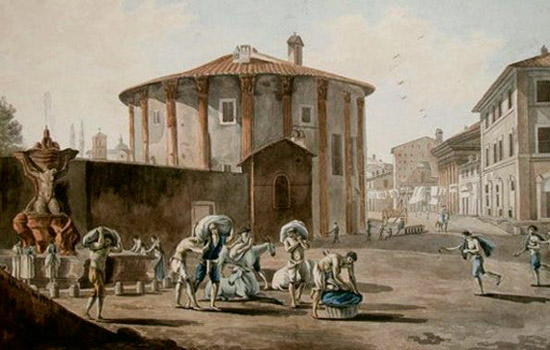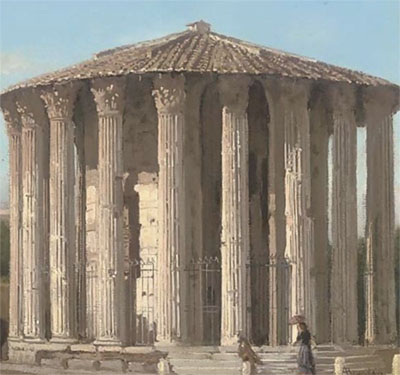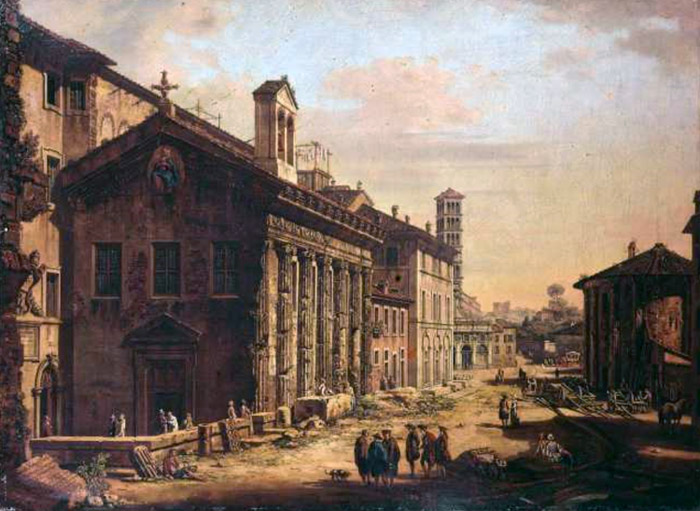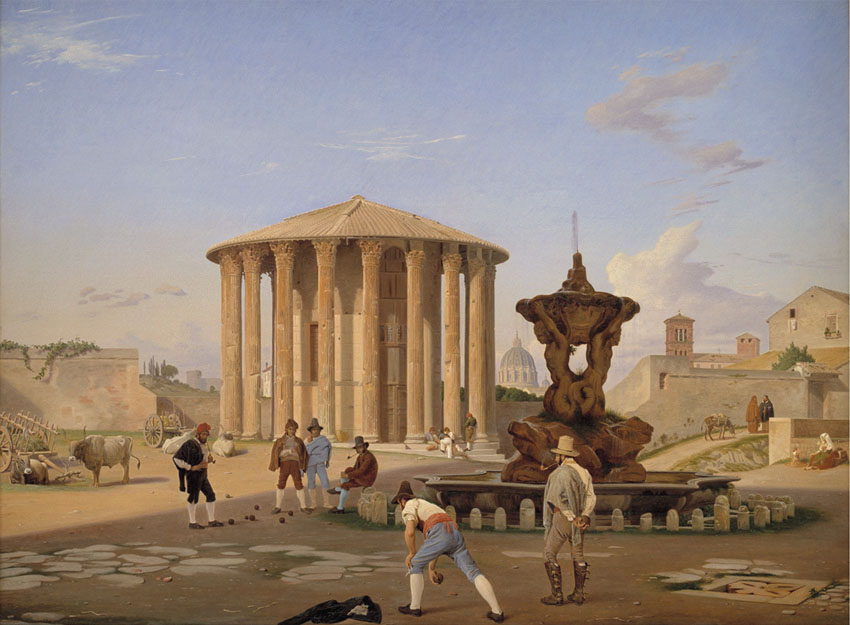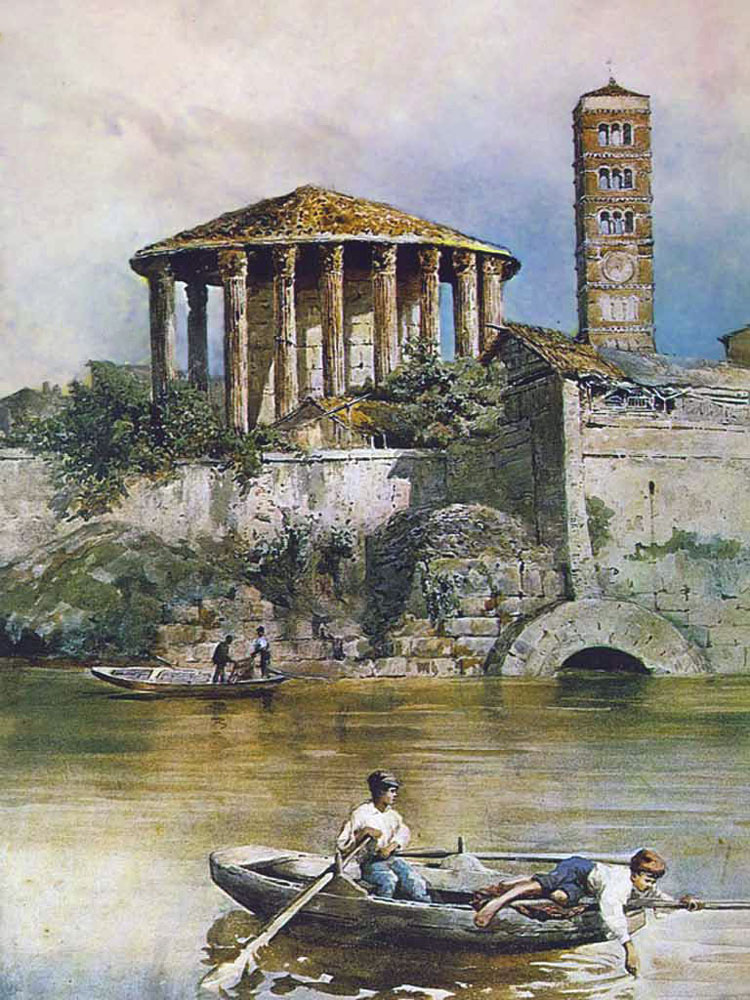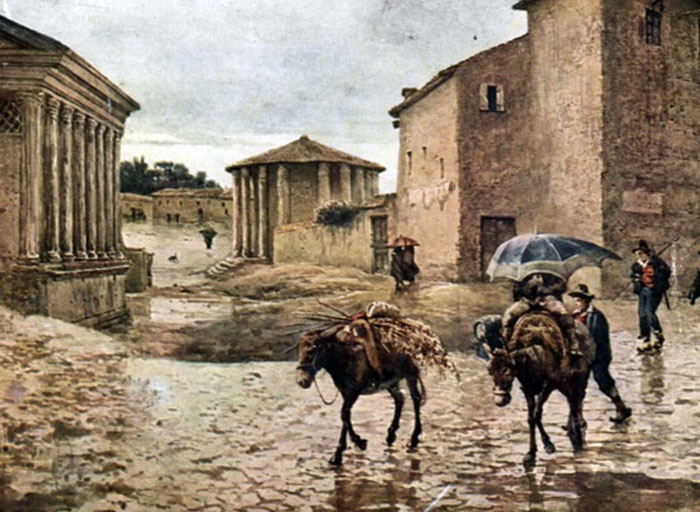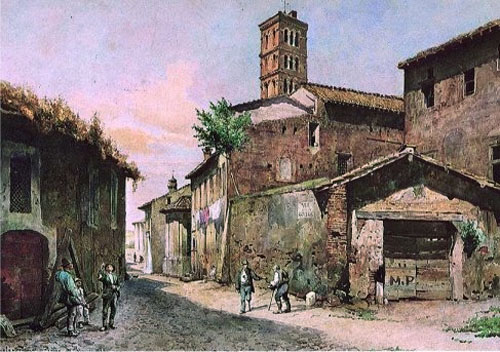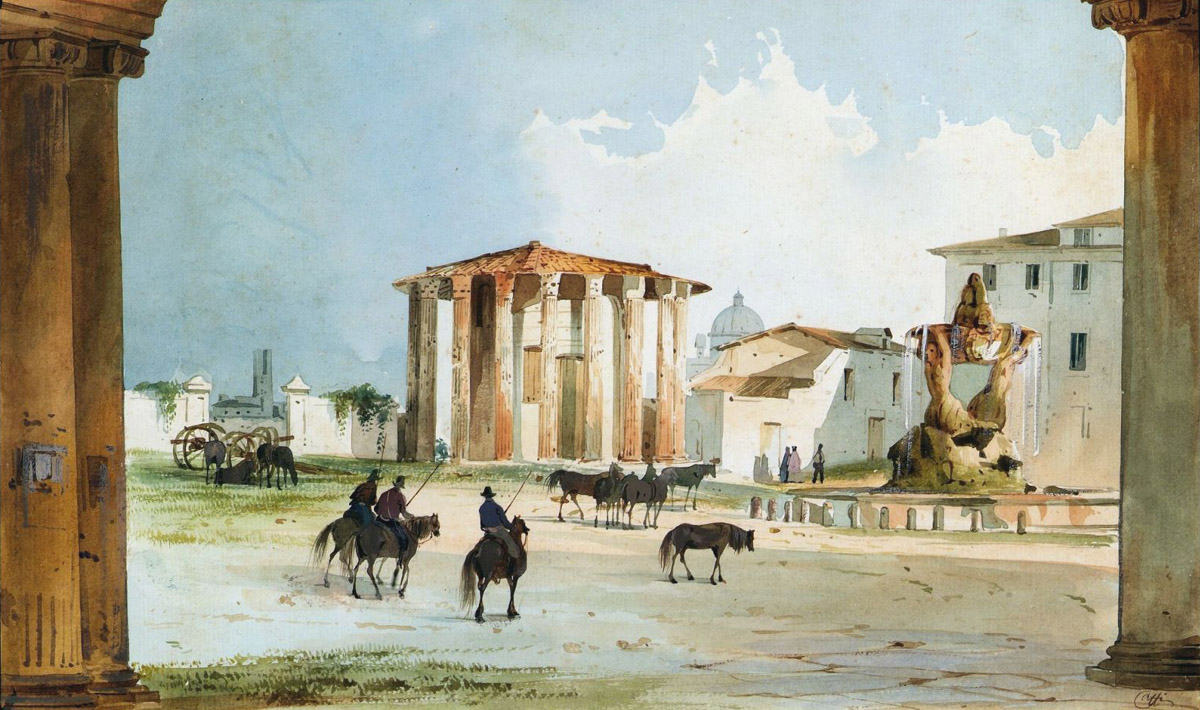The Forum Boarium, located today on the famous Piazza della Bocca della Verità, was one of the major economic centers of ancient Rome. Today, its remains attract visitors and archaeologists, offering a unique insight into Republican and Imperial Rome, as a site integrated into the religious and commercial topography of Rome.
Remains and religious significance
The Forum Boarium houses remarkable monuments, among the best preserved from Republican Rome, highlighting the religious role of the site, connected to trade and navigation.
The Temple of Hercules Victor, often called the “Round Temple,” was long misidentified as the Temple of Vesta. It is one of the oldest surviving temples in Rome, dating from the 2nd century BC, with a circular plan. Because of its resemblance to the temple of the same name located in the Roman Forum, it was mistakenly attributed to Vesta.
Nearby, the Temple of Portunus, dedicated to the deity of the river port, is an example of Greco-Roman architecture also dating back to the 2nd century BC. Until the 19th century, it housed the church of Santa Maria Egiziaca, dedicated to a former courtesan and protector of women of ill repute.
On the other side of the square, towards the area known as the Velabrum, the Arch of Janus dates from the 4th century AD. Behind it, the Basilica of San Giorgio in Velabro, built in the 7th century, is adjacent to the ancient Arcus Argentariorum.
Also nearby are the Broken Bridge, the Tiber Island, and, towards the Capitoline Hill, the Forum Holitorium.
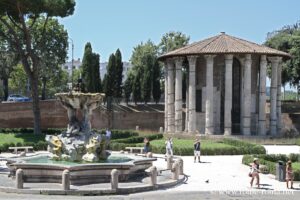
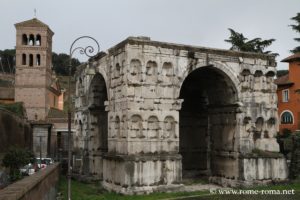
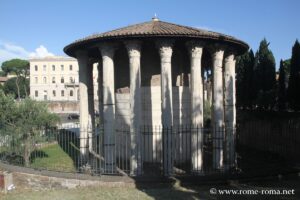
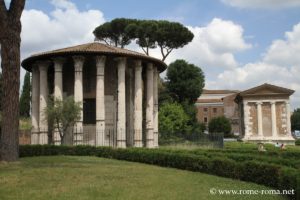
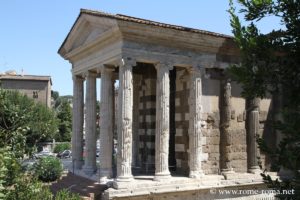
History of the Forum Boarium
An ancient market near the port
Nestled between the Tiber, the Capitoline Hill, and the Aventine Hill, this market was located in a plain that was once marshy, the Velabrum, drained as early as the archaic period to allow its development.
In antiquity, the Forum Boarium was adjacent to Rome’s first river port, the Portus Tiberinus, located at the western end of the city. It welcomed merchant ships supplying the cattle market of the Forum Boarium as well as the nearby Forum Holitorium, dedicated to the vegetable trade.
This market, already active in the Etruscan period (6th century BC), played a key role in the pre-Roman economy, particularly in the trade of cattle and salt, essential for food preservation.
Development and infrastructure
The Forum Boarium was considerably expanded in the 2nd century BC to meet the needs of a Rome undergoing rapid demographic and territorial growth. A landmark bridge, the Pons Aemilius, was built in 179 BC to facilitate exchanges between the two banks of the Tiber, replacing a wooden bridge from the 3rd century BC.
Damaged several times, it was rebuilt in the Middle Ages before being partially destroyed by a flood in 1598. Its remains today form the Ponte Rotto (broken bridge).
The Via Velabrum, linking the Forum Boarium to the Republican Forum, reinforced the market’s integration into the urban network.
The port’s activity declined with the expansion of the port of Ostia, enlarged under Claudius and Trajan in the 1st and 2nd centuries AD.
Edifices of Boarium Forum
- Boarium Forum in Rome
 The Forum Boarium, located today on the famous Piazza della Bocca della Verità, was one of the major economic centers of ancient Rome. Today, its remains attract visitors and archaeologists, ...
The Forum Boarium, located today on the famous Piazza della Bocca della Verità, was one of the major economic centers of ancient Rome. Today, its remains attract visitors and archaeologists, ...
Map and address
Address : Via della Greca, 00186 Roma RM, ItalieIf you see this after your page is loaded completely, leafletJS files are missing.
Ancient views in art
Sources and further information
|

